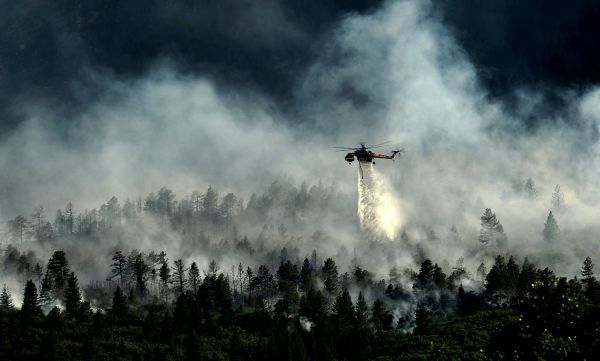New NOAA-led research has found that the temperature of a wildfire is a better predictor of what’s in the smoke than the type of fuel being burned - a surprising result that will advance a wildfire smoke-modeling tool currently under development.
Researchers found that around 85 percent of the variability of volatile organic compound emissions was controlled by the burn temperature, and that the lower the temperature, the more toxic the smoke. The scientific results come from a 2016 experiment involving closely monitored controlled burns inside the University of Montana’s Fire Lab. The findings were recently published in the journal Atmospheric Chemistry and Physics.
“If we know the temperature of a fire, we can better estimate what comes out of it, independent of what’s burning,” said co-author Carsten Warneke, a CIRES scientist working in the NOAA Earth System Research Laboratory. “With that information, we’ll be able to simplify the emissions models, better predict the downwind impacts of wildfires, and get much better forecasts for air quality.”
Volatile organic compounds, or VOCs, are one component of emissions produced by the complex chemistry of a wildfire. Particulates, including soot and tiny particles known as PM 2.5 are another. Scientists had assumed wildfire emissions were mostly dependent on the type of fuel burned— such as trees, shrubs, grass or forest duff.
Continue reading at NOAA.
Image via NOAA.


